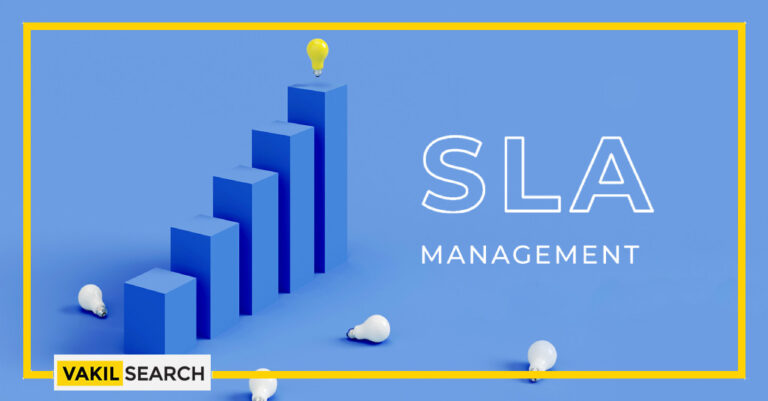Let us understand the difference between KPIs and SLAs and look at the practical business applications of each.
SLA and KPI are components of business process management, also known as BPM. The term SLA is an abbreviation for service level agreement. KPI, on the other hand, is commonly referred to as a key performance indicator. They are both concerned with tracking specific metrics of your company’s performance. The usage of each of these metrics, however, differs depending on who is conducting the evaluation.
In this post, we will define key performance indicators (KPIs) and service level agreements (SLAs), examine their applications, compare the two metrics, and learn more about them.
What is the Key Performance Indicator (KPI)?
A Key Performance Indicator (KPI) is a metric that measures how far you’ve come toward achieving a strategic goal. KPIs can be created for a variety of purposes:
- Processes, technology, components, or resources specific to a business.
- The overall success of the business in terms of growth, revenue generation, return on investment, or other decision-making factors.
KPIs are intended to simplify the process of assessing prior decisions and their impact and outcomes. KPIs give decision-makers a comprehensible and holistic view of a company’s performance from a range of perspectives, allowing them to adjust strategy for the best results.
Uses for Key Performance Indicators (KPIs)
KPIs are useful for assessing performance in key areas. They are often determined by the industry in which you operate, and your specific goals or project may decide the KPIs you track.
Take a look at a few of these examples:
- Average customer lifetime value
- Customer retention
- Debt versus equity ratio
- Employee turnover
- Revenue by market
- Sales qualified leads
- Year-over-year growth
What is a Service Level Agreement (SLA)?
A service level agreement is a written contract that outlines the quality and quantity of service that a vendor will provide to a customer. It establishes:
- The measurements that are used to assess the quality of service.
- Failure to satisfy the claimed service level expectations may result in retaliation or penalties.
An SLA is required to support the performance of operations that rely on the vendor’s services. Customers frequently make an optimal trade-off between service level and cost when different levels of service are given at different price points.
Vendors set expectations throughout their client base by establishing SLA contractual responsibilities. Both the vendor and the client can use the measurable metrics and performance indicators to identify, track, report, and assess the true measurements defining real-world business demands and performance.
Along with service-related aspects, a service level agreement includes provisions for:
- Payment
- Exchange of confidential information
- Work product ownership
- Warranties
- Liability limits
- Termination terms
- Insurance
Service level agreements should be viewed as targets for the measurable metrics rather than contractual obligations with provisions for legal and financial liabilities if service levels are not met. According to a 2016 Ponemon Institute research report, data center downtime costs roughly $9,000 per minute on average. Most cloud-based data center vendors would only refund credits incurred for unsatisfied SLA indicators under a service level agreement.
SLAs should be viewed as a method for improving service quality, which has an impact on business performance. SLA measurements and contractual responsibilities should be viewed as a process to improve service quality and satisfy growing business requirements in the age of cloud computing when business organizations expand their operations proactively in response to market conditions.
Uses for Service Level Agreements
SLAs let businesses set expectations with their customers and vendors, making it easier to manage those expectations in the future. This may help build trust between the two people, laying the groundwork for a successful partnership, and constantly meeting agreed expectations strengthens the relationship. SLAs differ for every organization, however here are a few examples:
- Availability
- Error rate
- Resolution time
- Service provider response time
- Turnaround time
Main Differences Between Key Performance Indicators and Service Level Agreement
- An SLA emphasizes the future, whereas a KPI focuses on past performances.
- Your SLA sets standards in advance in order to analyze your performance quickly, whereas the KPI you choose assesses your business performance against these criteria over time.
- SLAs provide information on baseline performance requirements, whereas KPIs provide information on the efficiency and accomplishment of company objectives or goals.
- KPI stands for key performance indicator, and SLA stands for ideal measurement.
- SLA satisfies quality and performance expectations in a variety of ways, both by the provider and the consumer, whereas KPI, because it is based on previous work, may not always satisfy quality and performance goals.
Key Performance Indicators Vs. Service Level Agreements
The major distinction between key performance indicators and service level agreements is that the former defines progress toward a strategic goal, whilst the latter does not. A key performance indicator (KPI) is an analytical framework for monitoring progress toward certain objectives. An SLA is a written agreement that specifies the qualitative and quantitative aspects of a service provided by a vendor to a client.
| Comparison Parameters | Key Performance Indicators | Service Level Agreement |
| Meaning | KPI is a success evaluator. | SLA is a performance measuring tool. |
| Define | KPI defines progress toward a strategic objective. | Service Level agreements provide information on the baseline performance expectations. |
| Feature | Looks ahead | Concentrates on previous performance |
| Measures | Performance measurements | Ideal measurements |
| Suitable For | Large organizations | Public-owned firms |
Tips for implementing KPIs and SLAs:
Make use of the following tips while dealing with KPIs or SLAs:
- Be specific: Provide precise specifications of what you’ll track and how you’ll measure performance, and make these selections based on average task baselines. This helps in the establishment of reasonable expectations and a common understanding.
- Limit how many you choose: Consider how many KPIs and SLAs you’re using. While it’s necessary to set enough to assess performance to achieve high goals, choosing too many can be difficult for employees to follow and comprehend.
- Update them often: Review your SLAs and KPIs on a regular basis to search for ways to improve them based on data and feedback. This might also help you make sure they’re still in line with your company’s needs and operations.
- Use a data dashboard: Consider creating a data dashboard to share with the rest of your team. This provides everyone with real-time data to better understand their performance and progress, and it may make data analysis and decision-making easier.
In A Nutshell
To summarize, service level agreements (SLAs) deal with the minimum expected, and agreed-upon quality of service delivered to a customer. KPIs, on the other hand, are concerned with desirable operational efficiency and organizational objectives. In order to uphold commitments and improve service quality, it’s essential to track both service level compliance and key performance indicators.
Read more:










